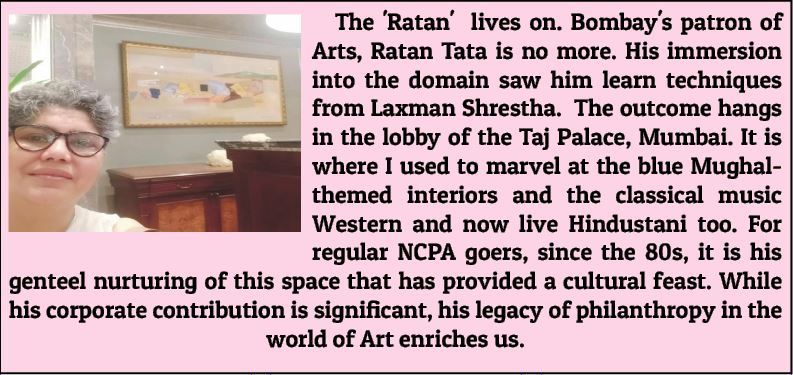Goa is abuzz with excitement as vintage bike and car owners, users, collectors and fans are decking […]
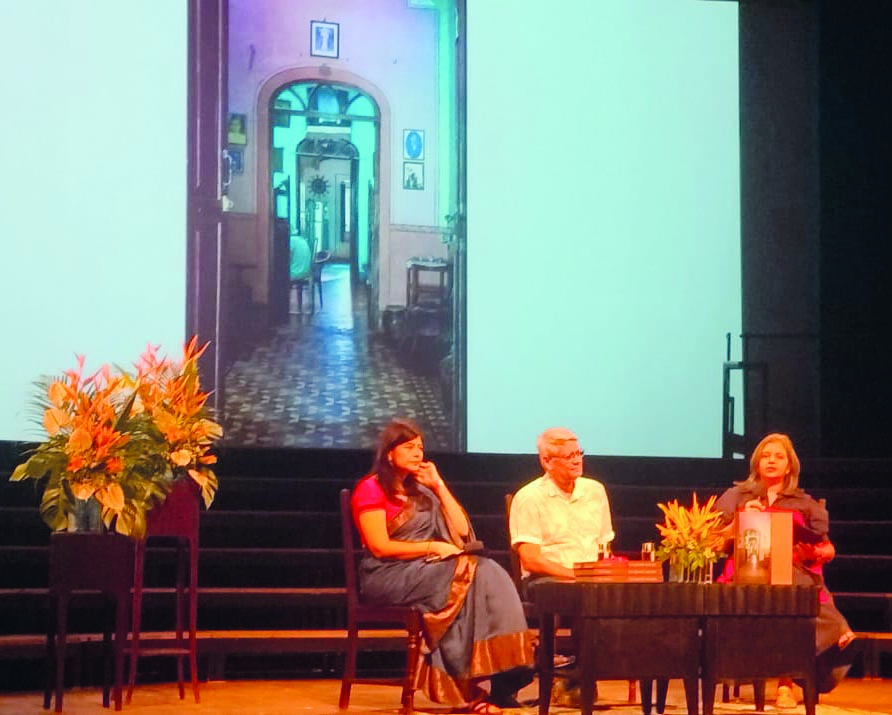
GOA: THE CALL FOR BELONGING!By Joanne Pinto Pereira
JO-GO ART, Oct 12- Oct 18 2024 October 11, 2024IT IS a known fact that Goans, who migrated to Bombay for education or to make a living, contributed significantly to the backbone of the city’s fabric and economy. From having two generations of mayors, one elected twice at the BMC, to Dr Lousito De Souza’s efforts of palliative care with the institution of Shanti Avedna (much to the disappointment of Dr. Juliet DeSa e Souza’s father was Dr. Herculano De Sa and the hospital, who had to close down the multigenerational gynaec family hospital). It’s a story of old Goa wherein if you visit the ‘C Ward’ the officer will put down a birth during early last century to Dr Honorata de Souza, her father. Stories abound of her charitable clinic despite her busy family life.
Goans were the lifeline of white-collar jobs. From this stems the caricature of Ms Fonseca, the endearing secretary, penned for “The Economic Times” by my fellow Loutlekar Mario da Miranda. The pulse of entertainment as performers and virtuoso musicians, seamstresses, the glamorous first Miss World Rita Faria, teachers and professors who schooled many a distinguished personality through the educational institutions, towering journalists like Frank Moraes; in short, the community set its imprint on the map of Bombay in its glorious era.
The “kudd” or transitory dorms provided shelter in the heart of downtown Crawford Market to migrants transiting for work or to board the ships. These were run by the various village communities and sported a subculture of Goan with its feasts and traditions were maintained.
Meanwhile in Goa
LATE Valmiki Faleiro’s book “Goa, 1961” attempts to capture the narrative of the turn in history when Goa, regarded as a state of Portugal, saw a reluctant retreat during the rule of its dictator Salazar. Goa was annexed into India by an Indian Army Operation on December 19, 1961. There was unrest. On January 16, 1967 the “Father of Public Opinion” and leader of the United Goans Party, charismatic Dr Jack Sequeira (“dhon panna” or two leaves as the party symbol) called for the first ever public referendum.
Should Goa merge with Maharashtra and Daman and Diu with Gujarat or should they be given Union Territory status? History records the identity of Konkani retained as the people of Goa voted against the agenda of the merged Maharashtrawadi Gomantak Party. Later in 1987 Goa became a state, the tiniest one within the Indian Union.
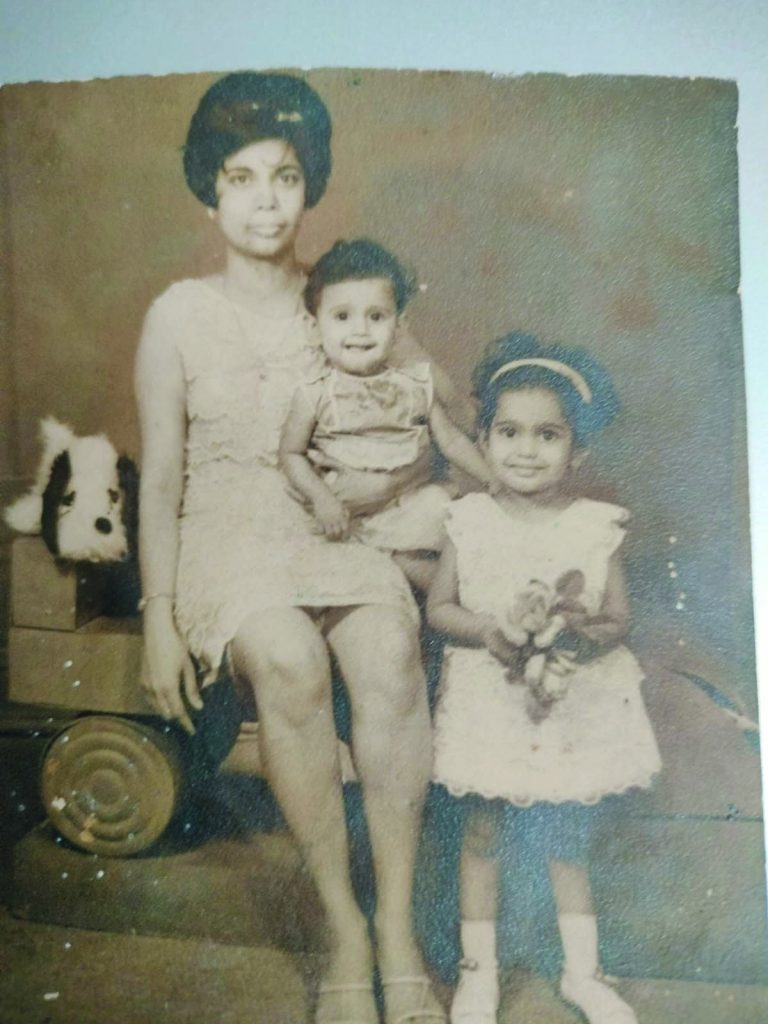
Adeus
LEST we forget, the oral narratives and much literature of that time speak of the deep longing of those like my journalist uncle the late Alfred de Tavares, a close associate of Dr Jack Sequeira, for their beloved Goa. He left Goa after the referendum that mobilized and retained the unique Goan identity, to settle in Sweden. It was a period of turmoil.
I recollect my mother vividly recalling her Goan roots, the culture and the family during this period. She was married in Bombay post this turn of history preoccupied as her parents were fatally ill. As if to intensify the disconnect a telegram got her back to Bombay when her mother’s condition took a turn for the worse post her visit to Mumbai to Dr Borges, well known in the nascent field of oncology, in the early 60s.
I can sense the tragic dilemma of her as a young bride as she spoke in anguish. There was her father pleading with her to stay as she took the ship to Bombay, delicately pregnant with me. She cherished the blessings he gave us as it was the last time she saw him. As it happened, the flight to Goa was aborted, so she missed the funeral rites. A couple of weeks later her mother succumbed, leaving her younger siblings to fend for themselves.
My mother spoke of her father, a forest officer who turned down a well-paying job offer, as he was due pension in due course of retirement. This was abruptly discontinued due to the change of guard and later the blockade, a time wherein Goa was cut off from the rest of India before being annexed.
My teenage uncle sold a huge family plot for Rs500 to meet the funeral expenses and decided to institute scholarships for deserving kids in the local school instead of building monuments for the parents.
Her unwavering resilience and positivity coupled with pious spirituality are what legacies in Goa are about. She would sing out melancholy fados or recite the Bara Dez and Salcette of her lyceum studies and Primogav and Secundgrao as well as the “ladaiha” in Portuguese. I grew up with her tutoring us in Hindi and Marathi (the Akshara learned from the Nepali watchman), Pianoforte and Bharat Natyam, and her laborious intricate crochet work. Her stories were about blue and white ceramic plates from Macao, rambling mansions of her maternal family, and recollections of their grand weddings where the close-knit cousins would bond over the 10-day long celebrations.
My mother spoke of how her mother frugally managed to make “tartaruk” bangles and beautifully designed marquisette rings while providing for her home through her bountiful orchard. She reminisced about the stylish clothes that were patterned from international magazines, a luxury to come by. The tailor who stitched her trousseau in fine silk, velvet and brocade made her stand out as elegant in my memory.
I grew up knowing she was different, one who came from the world of emotional intellect, accepting and forgiving. Any sense of commerce, like most affable Goans, did not exist. Yes, she did briefly work for Cosme Menezes when TAP the Airline of Portugal did their ticketing there but the idyllic world of the Portuguese days was not career or ambition-oriented.
Saudades
MY growing years were about the genial, and inborn generosity of Goans and Goa. Over-tourism and the land grab mafia have dealt a blow to the benevolence of the state. Respect the sensibilities of the local culture and you have a friend. Goans are known to stand up to preserve the environment and other issues that are rampant in today’s Goa. It is befitting that the unique culture is the reason to celebrate Goa in its symbiotic sibling Bomboi.
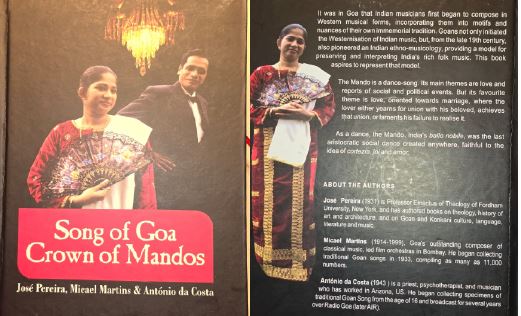
Festas de Goa in Mumbai
THE inaugural edition of Festas de Goa saw a great turnout. The weather gods approved too as the bonhomie, chitter chatter in Portuguese, catching up with friends whose houses featured in the book that was launched in amchi Mumbai. Viva!
Bomboi
I WAS keen on hearing the panel by Jane Borges. I met her around the time she was transitioning from her full-time job with “Mid-day.” She launched her fab “Bombay Balchao”with a walkthrough of Cavel to contextualize the novel. It is one that I have gifted to those who will connect with the nuances of the Old Bombay Cavel Area in Girgaum. I have yet to read her “Mafia Queens of Mumbai” but what is close to my being, is her project of the ‘Soboicar.”
I have documented the story of my mother, partly, after a training session by the 1947 Partition Archives founded by Guneeta Bhalla, based in California. My paternal family had settled in Chembur Central Avenue back in the late 40s and early 50s. This was when Chembur was viewed as a jungle and Dr Soares had to return six huge plots among those entrusted to him, valued at a princely figure of Rs 1,000 to the BMC as there were no takers despite his persuasion.
Jane and her team have adapted the “Bomboikar,” which is what Goans based in Bombay are called, to zero in on stories pertinent to the period wherein Goan clusters were predominant in the South Bombay area. This encompasses Cuffe Parade to Mahim to gather the stories of those who migrated. The net stretches to other areas to include people who disbursed to Sawantwadi, Ratnagiri and those who moved out of this pocket as families grew and branched to Borivali, Malad and Chembur from the Gloria Church area in Byculla. The narratives of this diaspora are what Jane seeks to create an oral repository for future seekers.
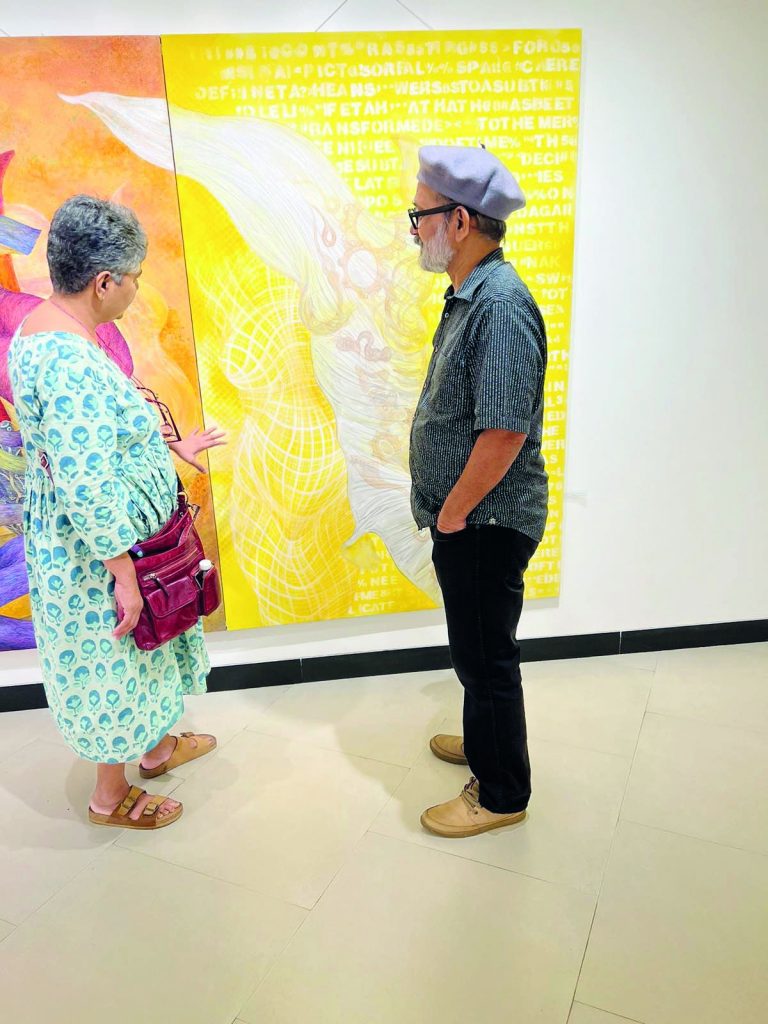
Art as a Mirror
TO commemorate the centennial of one who is regarded as the enfant terrible of Saligao, Goa the programming had a panel on FN Souza. As Dadiba aptly summarised it the persona of Souza could not detract from the genius of the artist. I ended up with the same conclusion in Goa with an Art writer at the launch of “The Archetypal Artist” by Jayeita at the Xavier Institute of Historical Research, who claimed that she would not accept a Souza even if it were given to her free. She bristled at my calling him outstanding, so each of us stood our ground.
A few months back at an auction preview at Pundole’s, Pinakin Patel recounted how the genius gifted Pundole a trunk of paintings upon his discharge from the hospital in gratitude for the support during his time there. Pinakin was offered a pick from the huge stack as he was a loyal patron of the then gallery.
Souza, The Goan Boy from Crawford Market
BOMBAY saw the making of Souza in the early 40s. The boy from Crawford Market studied in JJ. His first exhibition of his self-portrait in the nude raised an uproar charging him with obscenity. He was way before his time like most artists and intolerant of platonic social interaction. Viewers were appalled by his graphic depictions of the human form. Dadiba concurred that despite the limited availability of his paintings, what is sought after are his heads and the early sceneries of his days in Goa, the beautiful church structures, and village life.
The year he was born 1924 coincidentally saw other masters like Goan Gaitonde and progressives like Kishen Khanna and Tyeb Mehta, migrants to the city in the early 40s, trying to make sense of the turmoil that surrounded them. The Souza contribution to co-found the Progressive Artists Group with Hussain, Swaminathan marks a turning point in art history in India.
Capturing Bomaium’s Bundledas
THE more affable Mario Miranda inspired a huge following with the international recognition he received for his keen eye and lively style of reproducing the foibles of Goa of yore! His delectable sense of humour touched a chord with the consulates who got him to illustrate Berlin, Frankfurt, Spain, Lisbon. Mario was always even-tempered and would step out from his studio at Oyster, Colaba despite his looming deadlines with his finger seeped in black ink to converse. Many youngsters were inspired to take up sketching in his footsteps. Cartoonist Alexyz for one, newly turned octogenarian, has a collection of Mario’s work done for “The Illustrated Weekly.” The restoration of his home in Goa saw him back to his roots where he had provided direction for many a youth.
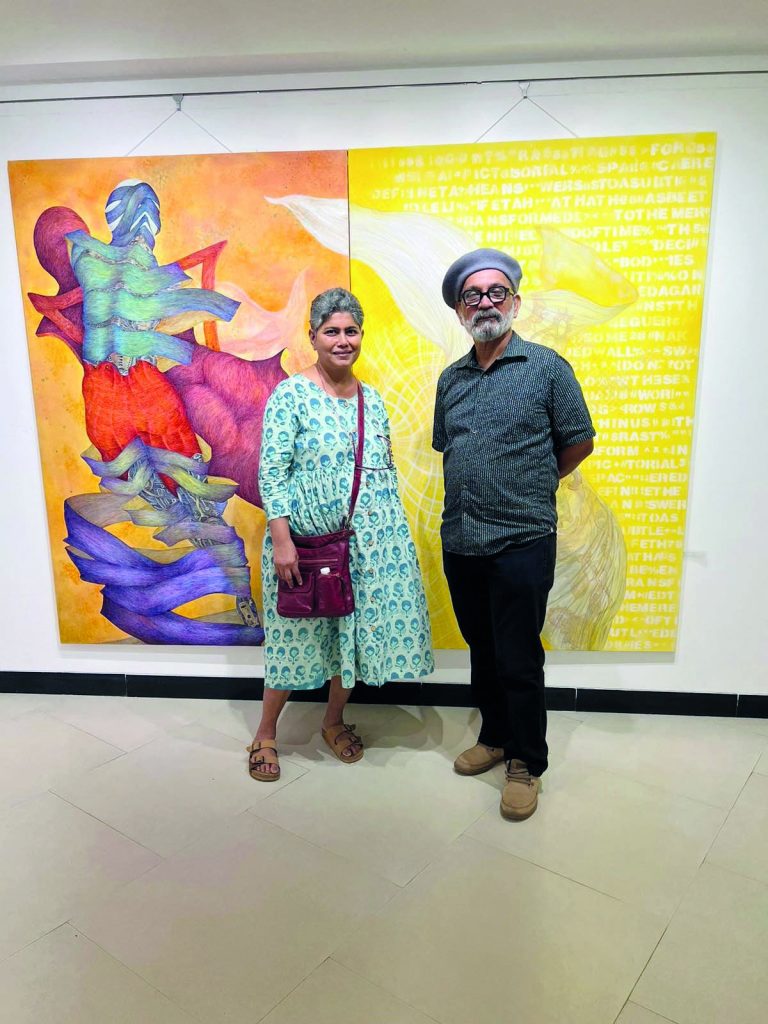
Back to back Goa-Bombay
THE next panel saw a book launch, “The Memory Keepers and Future Seekers” by Ulka Chauhan cover plays on the glimpse of the owner through the multiple layered facade playing memory games to retain her faculties.
Naresh Fernandes, editor Scroll.in and avid jazz music expert began with academic insights into harmonic and melodic variations in Indian and Western music. Goans were trained by the Portuguese to play for occasions and church services, and mastered Western genres of music for entertainment. This led to their entry to arrange music for Hindi cinema in Bombay.
One fabled composer was Anthony Gonsalves whose name went on to become the famous “My name is Anthony Gonsalves” in the blockbuster Amitabh Bachchan film “Amar, Akbar, Anthony.”
The ROH lawn sported a cheery look with colourful triangular paper tassels and warm lighting. The duo of Allan Vaz and Karen Vaswani (she conducts the Mahim choir when she is not graphic designing) drew people to the floor. Allan keeps the Konkani song genre in forte form composing music and performing at the Catholic gymkhanas in Mumbai.
Fados e Mandos
MUMBAIKARS were in for a treat with the rich silken voice of Sonia Shirsat. Sonia’s timbre and inborn vocal range essential to render the fado got her discovered. The Royal Opera House was a perfect setting for the fadista and her accompanists who light up the Madre Goa experience of Indo-Portuguese culture at Panjim. She is known to keep beat with the ghumot (percussion instrument made of a terracotta pot) for the lively mandos. The selection for the Konkani sequences was equally soul-uplifting in the lilting, melancholic Luso vocal tradition. Sonia is prolific in her mando sequences of lively music too.
Lorna
I BUMPED Into Konkani nightingale, Lorna, while she was shopping for shoes near Kala Ghoda. She was excited to hear that my cousin who played the feisty role of Philo, the matchmaker in “Nachoia Kumpasar,” had taken me for the shoot at the house location in Raia, South Goa. She was curious about the movie. I have yet to see it but when the real-life Lorna performed around 2010 after a hiatus of 20 years, it was a huge, happy moment for Goans the world over.
Lorna’s strong full-bodied voice belt songs that spoke of love, drunken men and such are a staple. I wonder what would she have thought of the Stuti choir performing her Lisboa in the choral classical genre at Royal Opera House. What I missed was hearing the canters perform in the village church of “Saviour of the World” at Loutolim and the Monte Fest under the full moon. Thankfully there are recordings aplenty but nothing like the magic of the live performances.
On the heels of the successful first edition of Festas, there is scope for the abundance that Goa holds in the hope that it will take off as an annual feature. The Saraswat tradition of food, culture and the symbiosis of communal harmonious coexistence of Goa and Goans. In particular the unique theatre form of the Konkani tiatr (theatre) with its unique commentary after each act on current affairs. The dekhni folk dances, the beautiful tradition of the “thodop” akin to the Malay/Philipino blouse and long A-line skirt, and the folk dances in kunbi ( field labourer) kapod (Goa’s version of khadi).
Goa is equally well known for the shigmos, the towering fabulous narkasurs during Diwali, and the 10-day celebrations in North Goa for Ganesha alongside its whitewashed majestic churches.
While Goa has become a “hot” commodity, the natives struggle to retain their pristine identity and sussegado (content) lifestyle which attracts people to the state.
Art Stalking Me
BACK to my hotpot of Art at Max City. A thematic extension and not to be missed is Goan artist Querozito De Souza being held at Hirjii Galery at Jehangir (JAG). Titled Corporeal and Ephemeral, the insights of the artist’s perceptions have received curatorial assistance from Niyatee Shinde. Worth a dekko. On till October 13. It is 10/10. The October edition of ANT has unfurled, Parabens till then!
